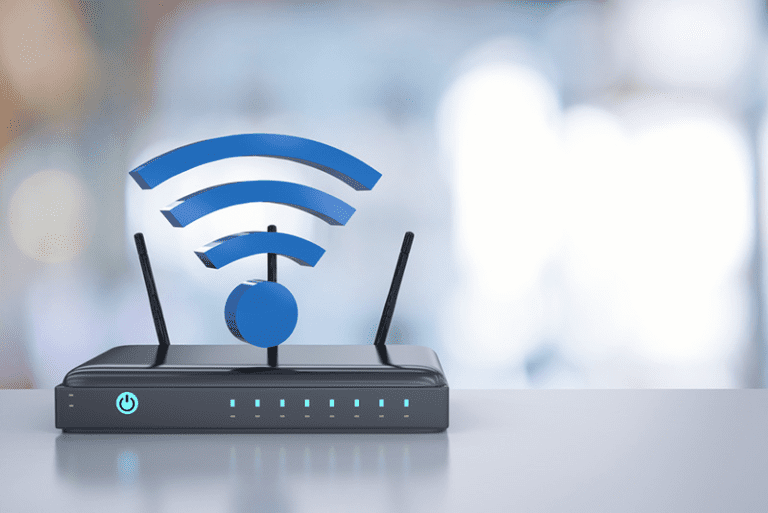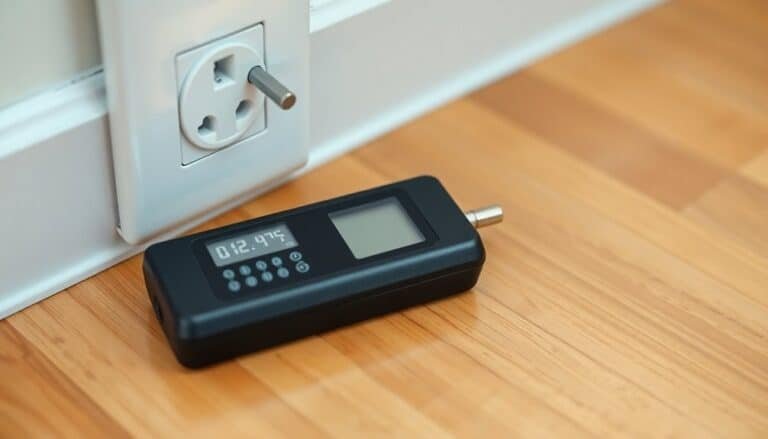How to Reduce EMF From Power Lines Near Your Home
To minimize EMF exposure from nearby power lines, keep a distance of at least 700 feet and use shielding methods like metal screens or EMF-blocking fabrics in your home. Manage devices by unplugging those not in use and choose wired connections over Wi-Fi.
For a comprehensive approach, consider professional EMF assessments for customized solutions. These strategies help ensure a safer environment around power lines, with additional methods available to further reduce exposure.
Disclaimer: As an affiliate, I may collect a share of sales from the links on this page.
Understanding EMF and Its Impact

As you encounter electromagnetic fields (EMFs) daily, it’s important to grasp what they’re and how they may affect health. EMFs consist of electric and magnetic fields generated by electric currents in wires and devices. Electromagnetic induction is the process through which these fields interact and create energy.
Non-ionizing EMFs, like those from power lines, differ from ionizing radiation, which poses DNA risks. Common exposure sources include appliances and wireless devices. Low frequency EMFs from power lines are a prevalent form of non-ionizing radiation that many people encounter regularly.
While some studies suggest a link between EMF exposure and childhood leukemia, overall evidence remains inconclusive. Current scientific consensus shows no consistent connection between non-ionizing EMFs and cancer, though research continues to investigate potential health impacts.
The Importance of Distance From Power Lines
To minimize exposure to electromagnetic fields (EMFs) from power lines, understanding the importance of distance is essential. EMF levels considerably vary based on the type of power line and current flow. Higher current increases EMF intensity, requiring greater distances for safety. For high-voltage lines, maintaining a distance of up to 700 feet may be necessary to guarantee exposure below 0.5 mG. In residential areas, distribution lines can still pose risks, with effective distances often around 25 meters. Using tools like gaussmeters helps accurately measure EMF levels, assisting in determining safe distances and reducing exposure efficiently. Testing for fluctuation in magnetic field levels is also crucial as they can vary based on time of day and season. Additionally, understanding safe exposure levels can help ensure that you are effectively minimizing your risk of adverse health effects from prolonged EMF exposure.
Implementing Effective Shielding Techniques

Implementing effective shielding techniques is a fundamental step in reducing exposure to electromagnetic fields (EMFs) from power lines. Metal shielding, like copper and steel, effectively blocks EMFs, though installation can be costly and challenging. You can integrate metal screens into walls or windows for enhanced protection. Meanwhile, EMF-blocking fabrics absorb EMFs, providing a more affordable but less effective alternative. These fabrics can be used in curtains or bedding. Combining both methods—layered metal and fabrics—can optimize protection, addressing penetration and absorption effectively. Tailoring your approach based on specific EMF sources is essential for achieving the best results, as proper matching of material types can significantly enhance shielding effectiveness. Additionally, using EMF shielding paint on walls can further reduce exposure and create an aesthetically pleasing environment.
Managing Household Devices for Lower EMF Exposure
While modern conveniences enhance our lives, they also contribute to increased exposure to electromagnetic fields (EMFs) in the home.
To reduce EMF, unplug unused appliances like microwaves, and opt for manual alternatives, such as toothbrushes. Maintain distance from operating microwaves, and schedule heavy appliance use, like dishwashers, during off-peak hours.
For connectivity, use Ethernet cables over Wi-Fi, position routers away from living areas, and turn them off when not in use.
Finally, consider replacing compact fluorescent bulbs with LEDs, which emit lower EMF, and keep smartphones on airplane mode when unnecessary to further minimize exposure.
Utilizing Grounding Techniques

Grounding techniques play a critical role in reducing electromagnetic interference (EMI) and enhancing electrical safety. Grounding connects sensitive electronics to the earth, offering a low-impedance path for unwanted currents.
For ideal results, consider seasonal soil conditions—better grounding occurs in spring and autumn with increased moisture. Utilize biochar to improve soil conductivity, reducing electrical resistance.
For low-frequency circuits, use single-point grounding, while multi-point grounding suits high-frequency applications. Regularly maintain soil moisture around grounding rods to counteract drought effects.
Technology Solutions for EMF Reduction
To effectively mitigate electromagnetic fields (EMFs) from power lines, several technology-based solutions can be employed.
Consider implementing these strategies:
- Power Line Shielding: Use active magnetic shielding systems to reduce both transmission and distribution line fields.
- Wiring Methods: Opt for hospital-grade metal-clad cable with twisted wires to minimize EMF and noise.
- EMI Filters: Install active or passive filters to lessen electromagnetic interference (EMI) in your home.
- Expert Consultation: Hire professionals to assess your situation and recommend the best mitigation strategies tailored to your specific needs.
These approaches can markedly decrease EMF exposure.
Creating a Safe Living Environment
When considering how to create a safe living environment, it’s essential to focus on strategies that effectively reduce electromagnetic fields (EMFs) from nearby power lines.
Start by increasing distance; move your home as far from power lines as possible. Incorporate physical barriers like grounded stainless steel mesh to shield your space.
Plant trees, as they can naturally diminish electric fields. Choose analog utility meters over digital ones to cut EMF exposure.
During construction, verify builders locate your home farther from power lines.
Seeking Professional Assistance for EMF Assessment
Many homeowners may still face risks from electromagnetic fields even after implementing measures to create a safe living environment.
Hiring professionals for EMF assessments is essential.
- Certified Specialists: You’ll work with experts like EMRS or CIHs.
- Comprehensive Evaluation: They’ll identify risk areas and measure field strengths.
- Mitigation Strategies: Experts develop tailored plans to reduce your EMF exposure.
- Regulatory Compliance: Assessments guarantee adherence to safety standards.
Frequently Asked Questions
How Do EMFS Affect Children Differently Than Adults?
Children absorb EMFs more deeply due to thinner skulls and higher water content. Their rapidly dividing cells and sensitive tissues make them more vulnerable to potential developmental impacts, increasing the risk of long-term health effects.
Can Pets Also Be Affected by EMF Exposure?
You might think pets aren’t affected by EMF exposure, but studies show they can experience anxiety, behavioral changes, and even health issues. Ensuring your furry friend’s well-being includes recognizing these potential risks and taking action.
Are There Specific Plants That Help Reduce EMF Levels?
Yes, specific plants like snake plants, aloe vera, and spider plants can help reduce EMF levels. They not only absorb some radiation but also improve air quality, benefiting both your health and your environment.
What Are the Long-Term Health Effects of EMF Exposure?
Imagine invisible waves swirling around you. Exposure to EMF might lead to potential long-term effects like increased cancer risks, neuronal damage, and cardiovascular issues. It’s essential to stay informed and mitigate any risks you can.
Do Smartphones Emit Significant EMFS Compared to Power Lines?
Smartphones emit radiofrequency EMFs, typically weaker than power line emissions. Though phone use can increase exposure, you can manage it by limiting usage and maintaining distance, especially during charging or when actively using your device.
Conclusion
Reducing EMF from nearby power lines is crucial for health. Increase distance, use shielding, and manage devices for a safer environment. Grounding techniques and technological solutions can further decrease exposure. For a thorough assessment, seek professional help. Prioritize safety to make your home as tranquil as a remote forest.


